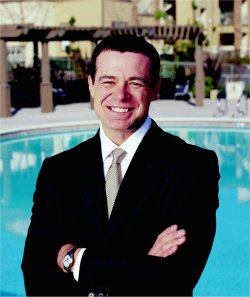Action Plan One of Toomey’s first moves was to reduce the workforce by 10 percent – and a large part of that was middle management. “To me it was the right thing to do for a number of constituents,” explains Toomey. “The property management organization had too many layers of supervisors. And the layers of supervision did not add value or energy. So we eliminated a couple of layers of management and gave people closer to running the asset a bigger voice in how to run the company and how to deliver better service to our residents.”
While the decision was seen as controversial – many of the people who were laid off were long-term associates – Toomey stands by his decision. “If that was controversial, I think it was probably needed,” he says. “It certainly invigorated the results, because over the last two years our company has exceeded all the apartment REITs who deliver top results. I will let the results speak to whether it was a good decision or not.” For example, since January 1, 2001, UDR has delivered a 67 percent total return on investment, while the industry has delivered 10 percent – only five percent if you exclude UDR’s numbers. In addition, in 2000 the company’s same-store sales were in the lower half of its peer group and since then have steadily risen to the upper quartile. A further recognition of the company’s efforts was seen this January, when UDR was added to the S&P MidCap 400.
UDR took 60 percent of the savings from the staff reduction and gave it back to the remaining associates in the form of pay raises. “So, our communication to our employees was ‘we want you to work harder, and we are going to pay you to do that.’ I thought it was the right thing to do. And it has worked very well. We held our payroll cost almost flat over the last two years and while we have fewer associates, they are happier associates.”
Strategy Implementation The staff reduction was part of a concerted effort to improve the bottom ine. UDR wants to raise occupancy rates, but it also is looking at more granular measures, such as cost per unit and collection per occupied unit. Standardization also is a high priority. UDR used to be run like three different companies, says Carlin. When UDR bought other companies, it didn’t integrate their systems.
On the technology front, UDR has identified the processes it wants consistently applied across the country and automated them. Payroll was one of the first to be completely automated – from the initial job applications to pay checks to reviews to pay raises. There is not a piece of paper in the system.
“We are now into the next part, which is our purchasing effort,” says Toomey. “We are automating that effort because in the past, for example, we used to get 180 invoices per month from Century Maintenance. And today, we get one electronic file saving more than 10 percent on our purchasing.”
The company recently completed a conversion and upgrade of PeopleSoft, which puts all of its financial reporting on the Web. This has saved distribution time and duplication of effort. In addition, UDR is investigating automated rent collection and deposits. “That is a lot of paper work that consumes time at the community that is not related to service or sales,” says Toomey. “So, I think those are the tech initiatives that will help improve the bottom line.”
